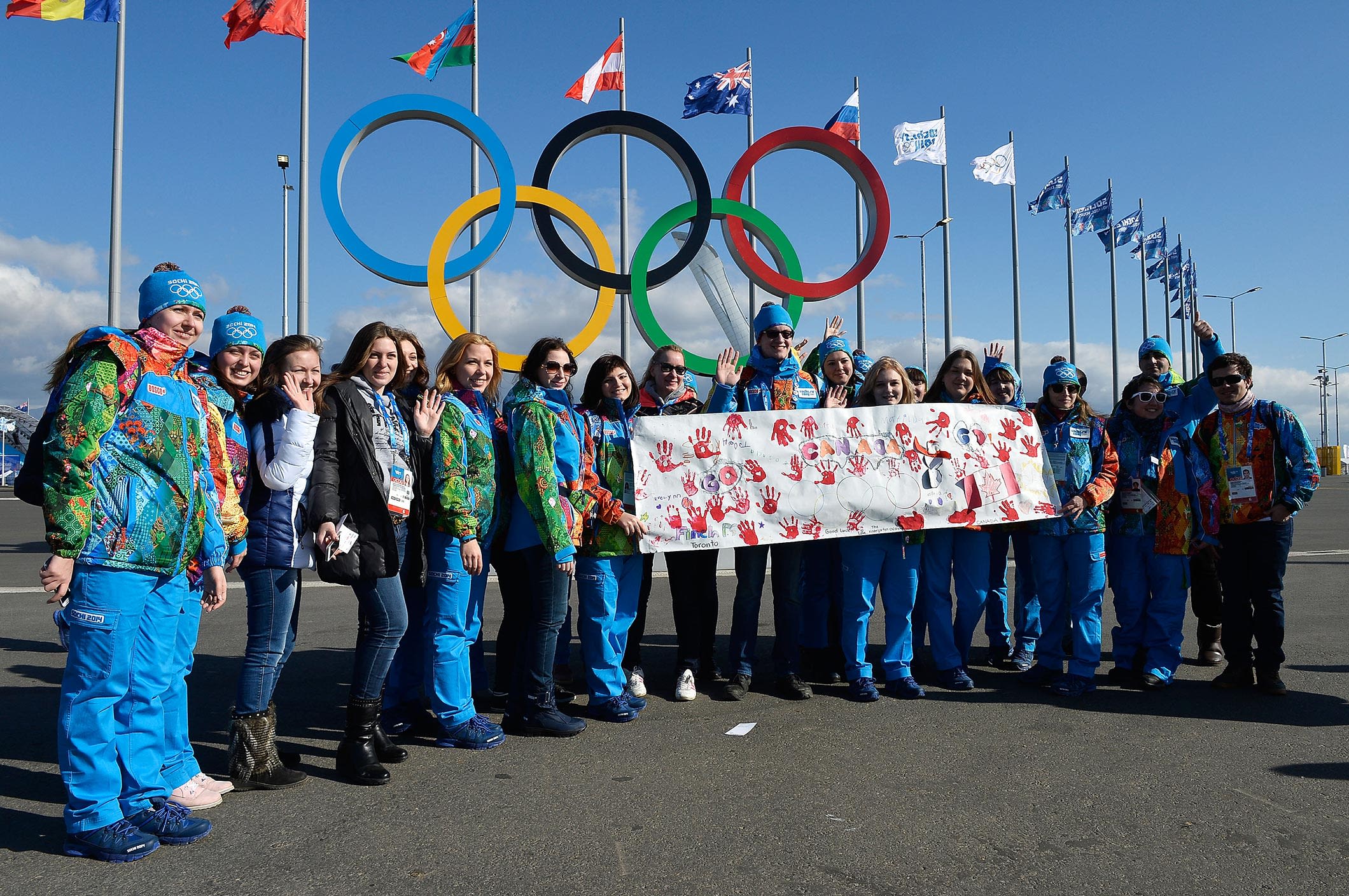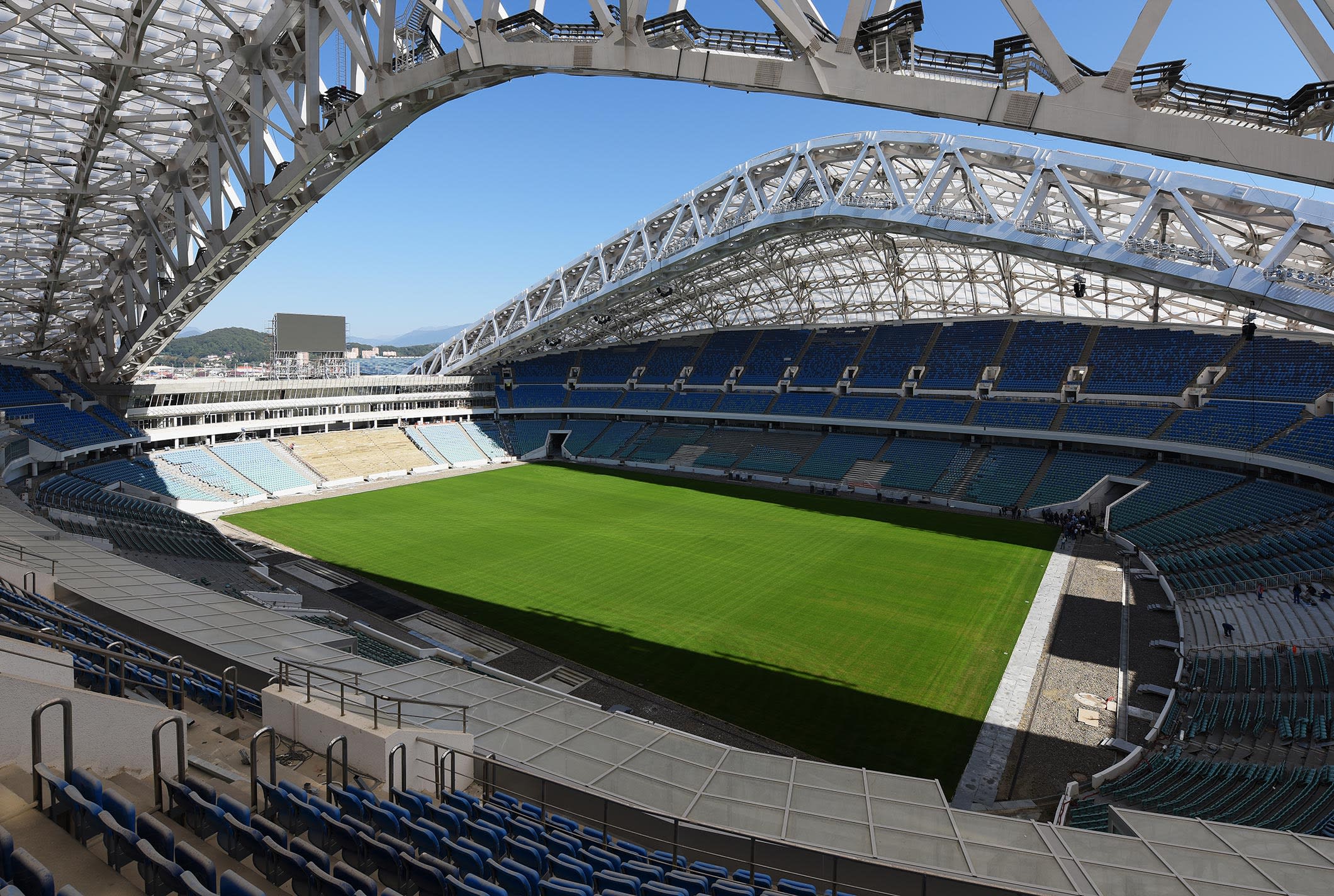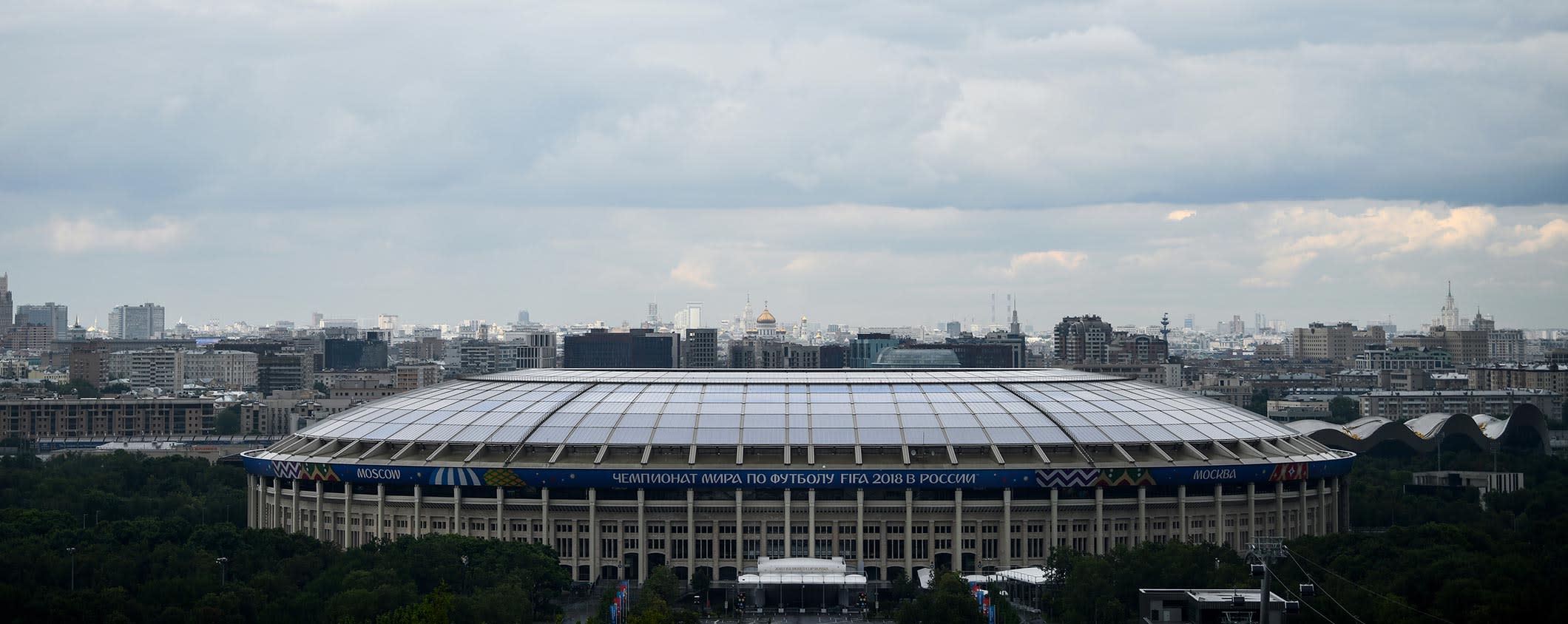Olympic legacies live on in Russia
As Russia hosts the FIFA World Cup this summer, the legacies of the Olympic Games will be back in the spotlight.
The world will turn its attention to Sochi again this summer as it will be hosting several matches of the FIFA World Cup, including a quarter-final.

Football fans in Sochi will experience a city full of life. They will likely cross paths with students attending courses inside the Olympic Park, such as Sirius, a special programme for talented children in a unique educational centre in Sochi. It is a place where, every month, 700 children with special talents from all over the country can develop their skills and knowledge in different areas like sport, science and the arts. The Centre uses infrastructure in the Olympic Park, the Shayba Arena, which hosted ice hockey, the former International Broadcast Centre, and the former media and broadcast hotel. It operates all year round. Accommodation and travel costs are covered for the children. Training is run by leading teachers of schools specialising in sport, physics and mathematics, chemistry and biology, as well as by outstanding representatives of the Russian arts community, such as Svetlana Ugarova, former soloist of the Bolshoi Theatre. This May, the graduating students were addressed by Indian Prime Minister Narendra Modi. Commenting on the Centre, Modi said: "… here I see very active, energetic children, children who are ready to put all their efforts into contributing to the development of humankind, in general, and Russia in particular and, of course, to do something special."
Another example of an educational institution that is a legacy of the Olympic Winter Games is the Russian International Olympic University (RIOU), which was created in Sochi in 2009, providing education for more than 200 Russian former athletes, with a Master in Sport Management, and producing academic research about the Olympic Movement and the sports sector in general. In 2014, the University trained managers to help deliver the Games.

Four years after the Olympic Games, Sochi has an integrated tourism complex uniting the newly built Olympic facilities with the city's historical centre and the traditional tourist routes. Between 2009 and 2014, Sochi saw a major transformation of its tourism infrastructure, including the construction of new 3-, 4- and 5-star hotels, and the construction or upgrade of several wellbeing resorts. Since 2014, the wellbeing resorts have accounted for 13 to 13.5 per cent of Sochi’s economy. In 2016, the value of services provided by all Sochi wellbeing resort facilities came to USD 700 million. Sochi also now hosts an average of 250 sporting and cultural events every year. Sochi is now a year-round destination, with the skiing facilities of the mountain venues well used.
The legacy of Sochi 2014 travels far beyond the city, as Sochi 2014 created a volunteering culture and network that impacted the entire Russian Federation. The volunteer centres around the country, which were created to help recruit volunteers in 2014, have been active again recruiting new volunteers for the FIFA World Cup 2018.
One the venues for the FIFA World Cup is the Fisht Olympic Stadium, which was built for the Opening and Closing Ceremonies of the 2014 Games. After the Games, the Stadium was fully refitted and is now used as a training centre for the Russian national football team as well as for staging large-scale Russian football competitions such as the Russian Cup Final in 2017. In June and July 2017, the Stadium hosted four matches of the FIFA Confederations Cup.

The Fisht Stadium is not the only former Olympic venue being used for the World Cup. The Luzhniki Stadium, which will host the final, was the main stadium for the Moscow 1980 Olympic Games. The then-named Central Lenin Stadium has its roots in the Olympic Games, and was built after the success of the USSR at the Helsinki 1952 Olympic Games to encourage and develop the athletic potential of every citizen.

Where are Sochi’s Olympic Park venues now?
Bolshoy Ice Dome
The Bolshoy Ice Dome hosted the ice hockey matches during the Olympic Winter Games Sochi 2014, and has become the home arena for the Sochi Hockey Club, HC Sochi. The club joined the Kontinental Hockey League (KHL) in the 2014/2015 season. In addition, the Ice Dome has hosted Night Hockey League matches, the Euro Hockey Tour, the matches of the Channel One Cup and the KHL All-Star Games, as well as the Vivat Russia dance contest in 2014. Additional training rinks, workout areas and gyms are now part of the complex, which is also used by young athletes for ice hockey training camps. The Ice Dome attracted nearly 160,000 spectators during the 2016/2017 hockey season.
Adler Arena
The Adler Arena hosted the speed skating competitions of the Olympic Games. In 2014, it became the venue for a regional tennis academy featuring two clay courts and three hard courts. The academy is a centre for training and tennis events. In the spring of 2014, it hosted a Fed Cup match between the Russian and Argentinean women’s teams. In 2015, two more facilities opened at the Arena – the Yulia Barsukova gymnastics centre and the Bullet hockey training centre. There are plans to add a trampoline centre and a martial arts room to the Arena.
Ice Cube Curling Centre
The Ice Cube was the venue where the Sochi 2014 curling competitions took place. Since the Olympic Games, it has continued to function as a curling venue. The Centre has hosted international curling competitions such as the World Curling Championship in April 2015, as well as national curling events like the Russian championships, and regional men’s and women’s curling competitions. The venue is also used as a multi-purpose sports and entertainment centre, as well as a training arena for Russia’s curling team. In 2016, the venue hosted the World Cup and the World Championship in acrobatic rock-n-roll.
Iceberg Skating Palace
The Iceberg Skating Palace was the venue that hosted the figure skating and short-track skating competitions of Sochi 2014. Currently the venue hosts training events for the Russian national and regional teams, as well as international and national competitions in hockey, speed skating and short track. The availability of a special insulation blanket (IceCap) allows it to be used for both winter and summer events. As a multipurpose facility, it offers equipment for martial arts, table tennis, rhythmic gymnastics and dance sport. The venue houses a figure skating school run by the Olympic champions Tatyana Volosozhar and Maxim Trankov. Every year, the school provides training to over 200 young athletes aged between 6 and 18. In addition, the Iceberg Skating Palace hosts an ice show by the renowned figure skater Ilya Averbukh.
Shayba Arena
The Shayba Arena hosted some ice hockey matches during the Olympic Winter Games Sochi 2014. In 2014 and 2015, the arena facilities were used by the All-Russia Youth Sports and Education Centre, providing services to some 18,000 children. In 2015, the Education Centre was transformed into the Sirius Academy. Sirius is a unique education centre for talented children from all parts of Russia which offers them the opportunity to develop their skills and knowledge in the areas of sport, science and the arts.
Olympic Park
After the Olympic Games in 2014, the Olympic Park itself became a sports facility, with the construction of a six-kilometre automobile racing track with a seating capacity of 55,000. Since 2014, the Sochi Autodrom has hosted the FIA Formula One Russian Grand Prix as well as several other series such as the Russian Touring Car Championship. It is a multifunctional venue that can host cultural and corporate events. Nearby, a sports car museum was built close to the main stand.